You don't need so much in your life to be happy, do you? A skateboard, soft wheels, and a blessing of nature. And if you know how to push, everything's going to be alright. In case your push feels stiff or unstable, let me show you scientific ways to fix it. By combining the methods introduced in this article and Whythetrick's system, you'll be able to push more easily and safely.
Summary
Weight on the front foot
Place your front foot on the board's centerline, pointing your toe forward. Shift your upper body directly above your front foot—as if you're “covering” it with your chest. Keep your knees slightly bent and your eyes forward. This alignment helps you stay stable and steer smoothly during your push.
Balance by Staying Compact and Kicking Verticaly Down
Instability often comes from kicking too far or leaning backward. To stay balanced, lower your body and keep your torso stacked vertically over the front foot. Drop your back foot straight down near the board, not out to the side. This compact, downward motion reduces risk and keeps your center aligned.
Generate Power to Thrust with Your Whole Body
To push stronger, lean your entire body forward—imagine your chest folding toward your front knee. For running pushes, stay crouched and low as you jump onto the board, keeping it close to your body for safety.
Visualise Your Weight Distribution
Use the chart analyzer to visualize your weight distribution.
Simulation
Hit the icon in the middle to start a 3D animation.
Foot Placement
First, place your front foot near the centerline of the skateboard, just far enough forward so you can see the front bolts. While your front foot is usually placed sideways, during a push, the front toe should point straight forward, aligned with the skateboard.
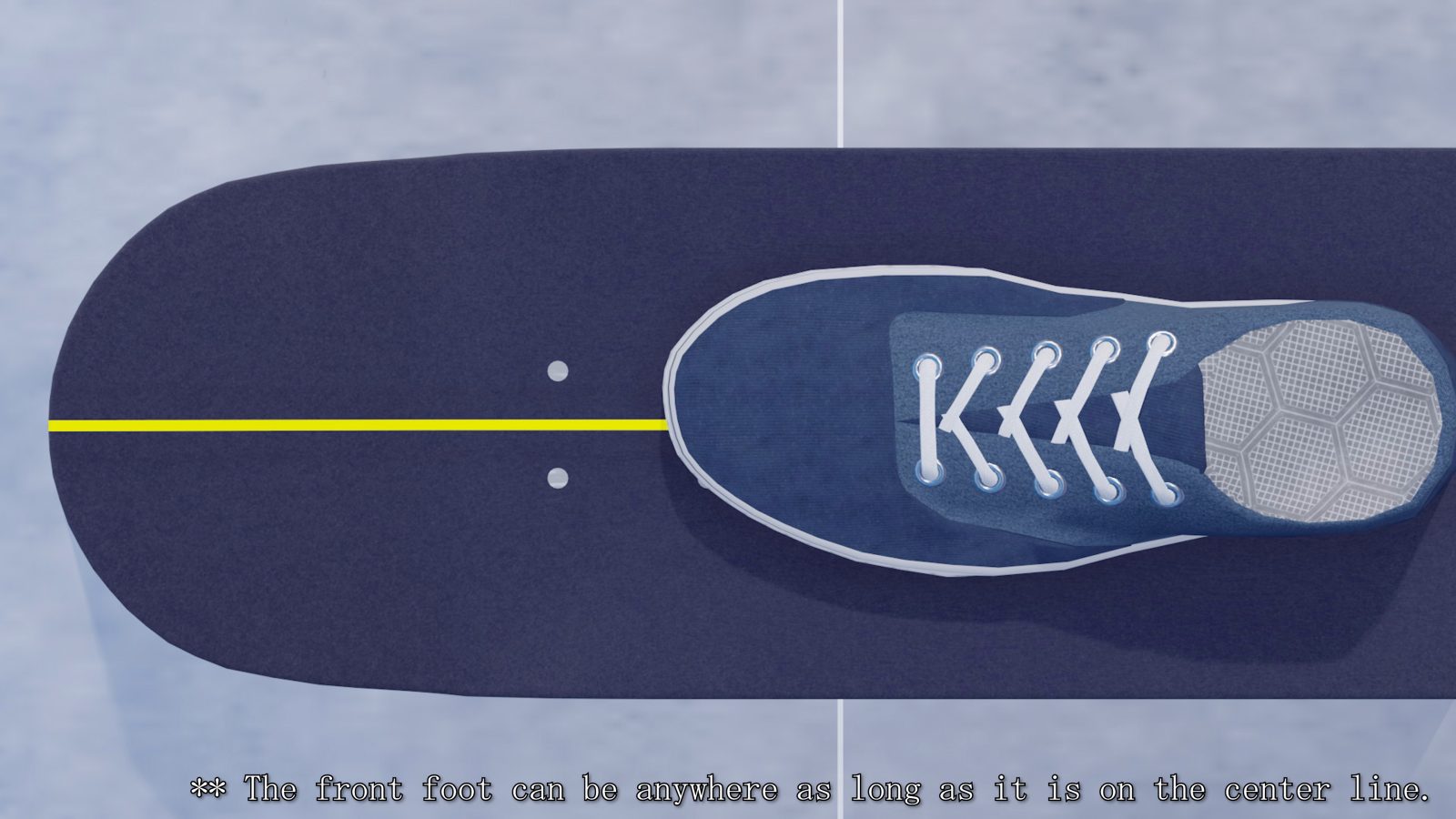
You might think that placing your front foot straight forward will make it harder to control the board, but during an actual push, you can still maneuver your board with this foot placement. When taking turns in skateboarding, the board tilts around the pivot points of trucks. Since your front foot is larger than these points, you can tilt the board and take turns by shifting your weight to either side of your front foot.
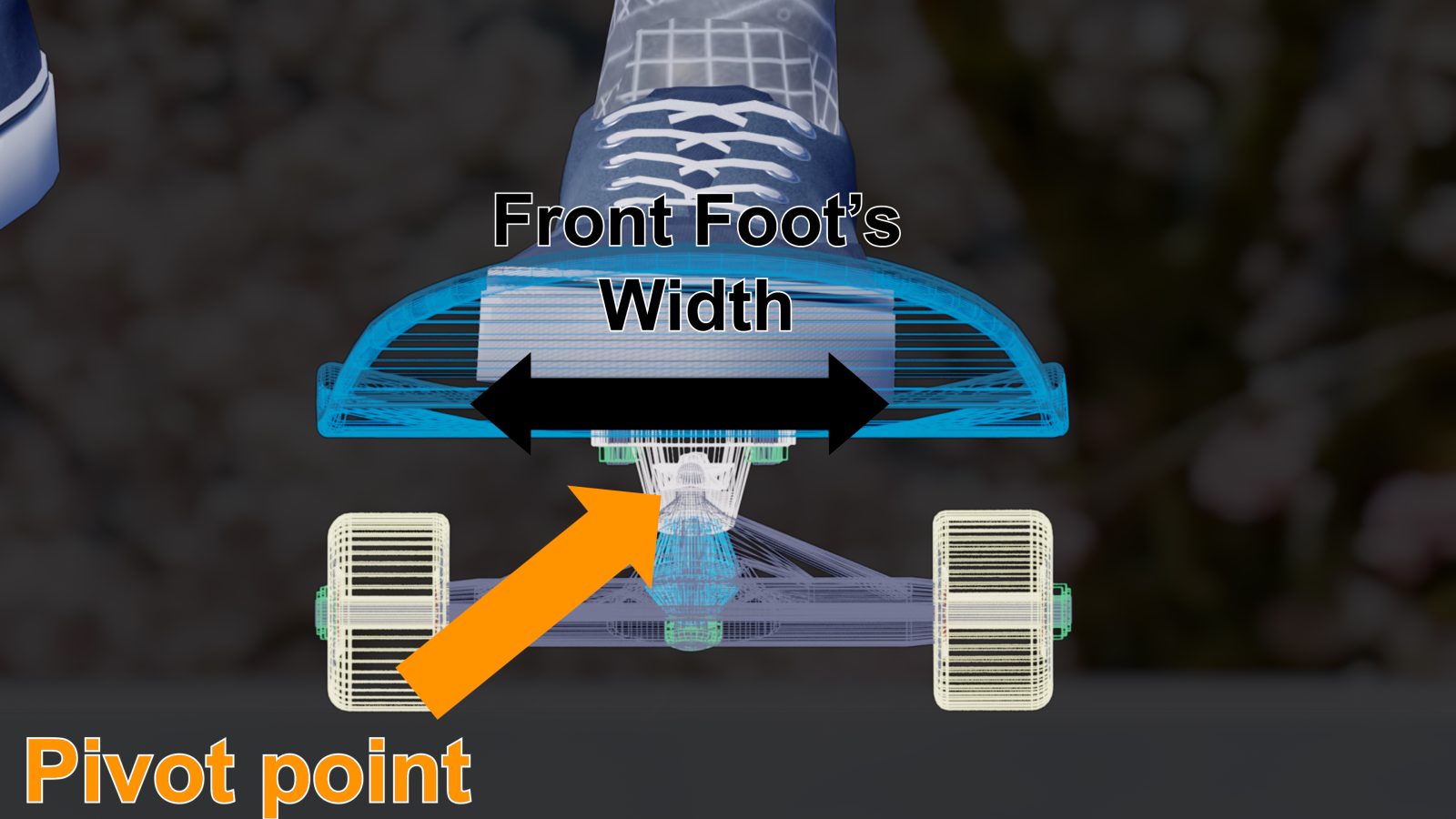
Shifting Your Weight to the Front Foot
Let's go back to how to push. The first step is to slightly bend your knees and put your weight only on your front foot on the skateboard.
Understanding What Causes Loss of Balance
Now, try moving the board back and forth while keeping your front foot on it. You'll see how far the board can move away from your back foot before you lose balance. This shows that placing too much weight on your back foot or kicking the ground too far from your front foot can cause instability.
Positioning Your Body Over the Front Foot
If your body leans backward during this step, it can lead to a fall. By placing your upper body over your front foot, your weight naturally shifts forward, making it easier to stay balanced and preventing situations where the board shoots out in front of you.
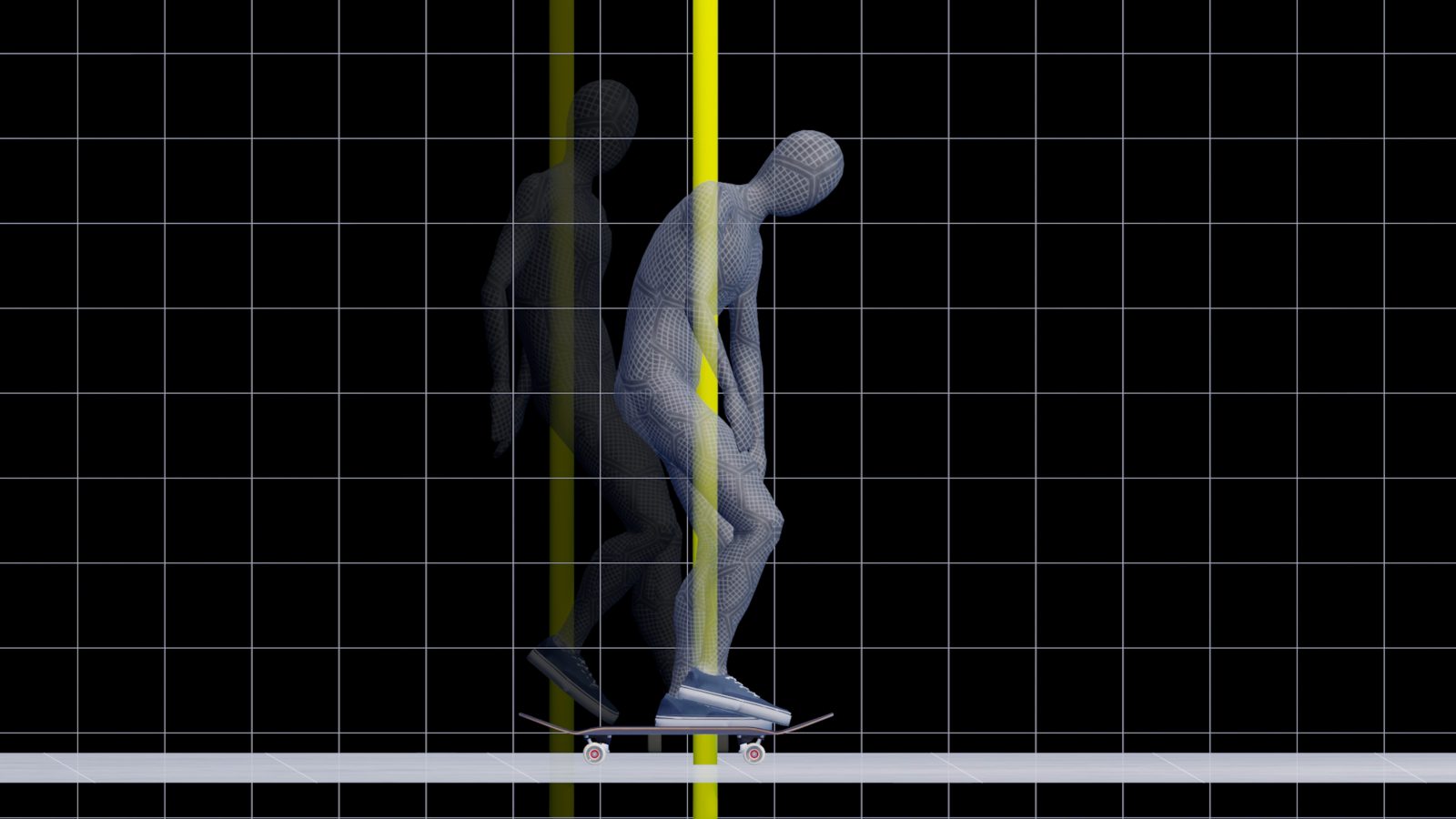
Keep Your Weight on the Front Foot
You want your weight to remain on your front foot throughout the motion. Lower your body while keeping your weight over your front foot, and bring your back foot down to the ground. Notice how much the body weight lowers during this step, creating a downward acceleration.
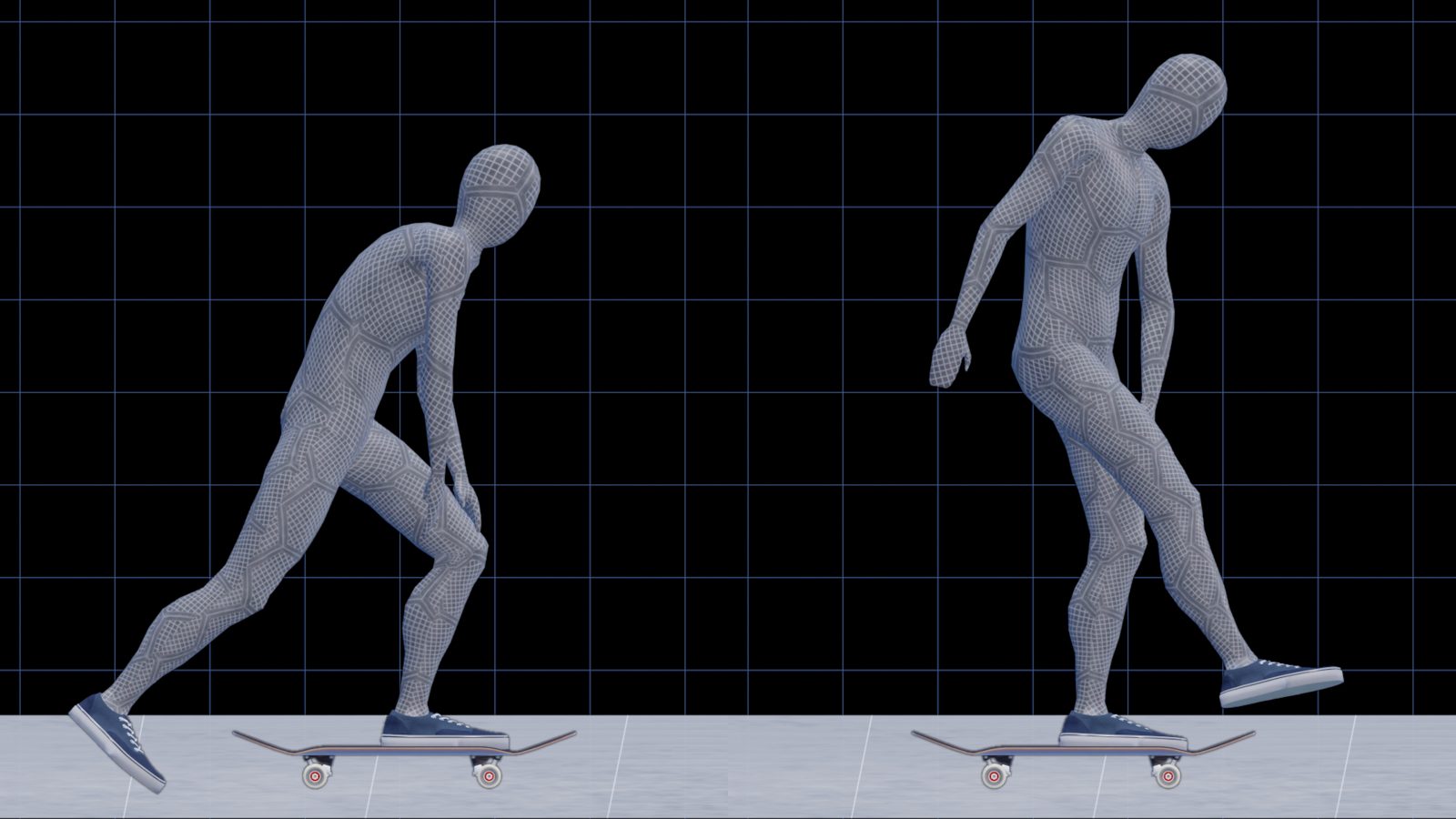
The Physics of the Push
When the back foot touches the ground, it comes to a stop, but the board continues moving forward. As a result, the back foot ends up positioned behind the center of mass. By kicking off the ground while counteracting the downward force of gravity, you can generate propulsion to move the body forward.
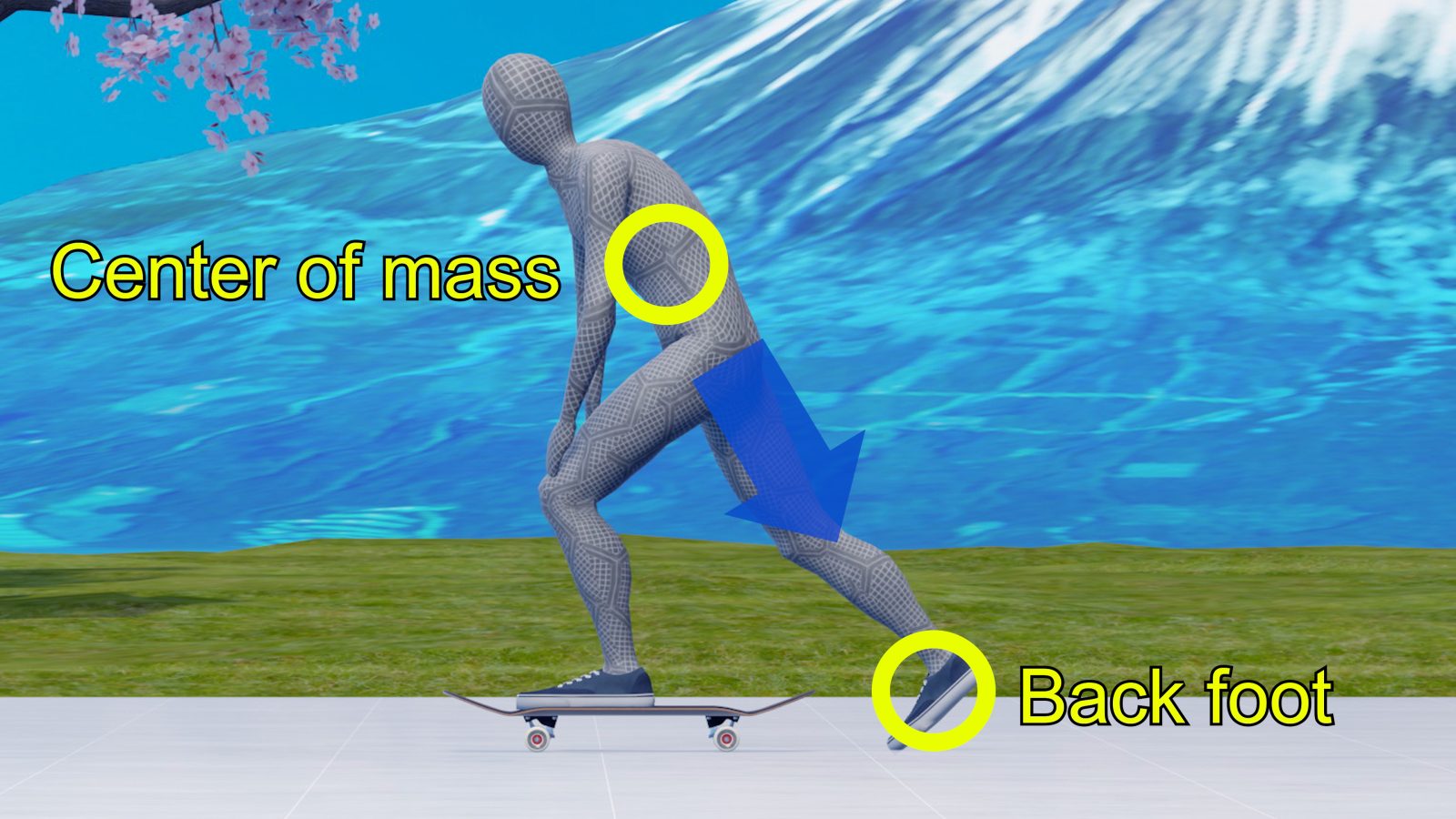
What Causes Imbalance
Focus on placing the back foot straight down, vertically, right next to the board. Placing it too far from the board can cause a loss of balance.
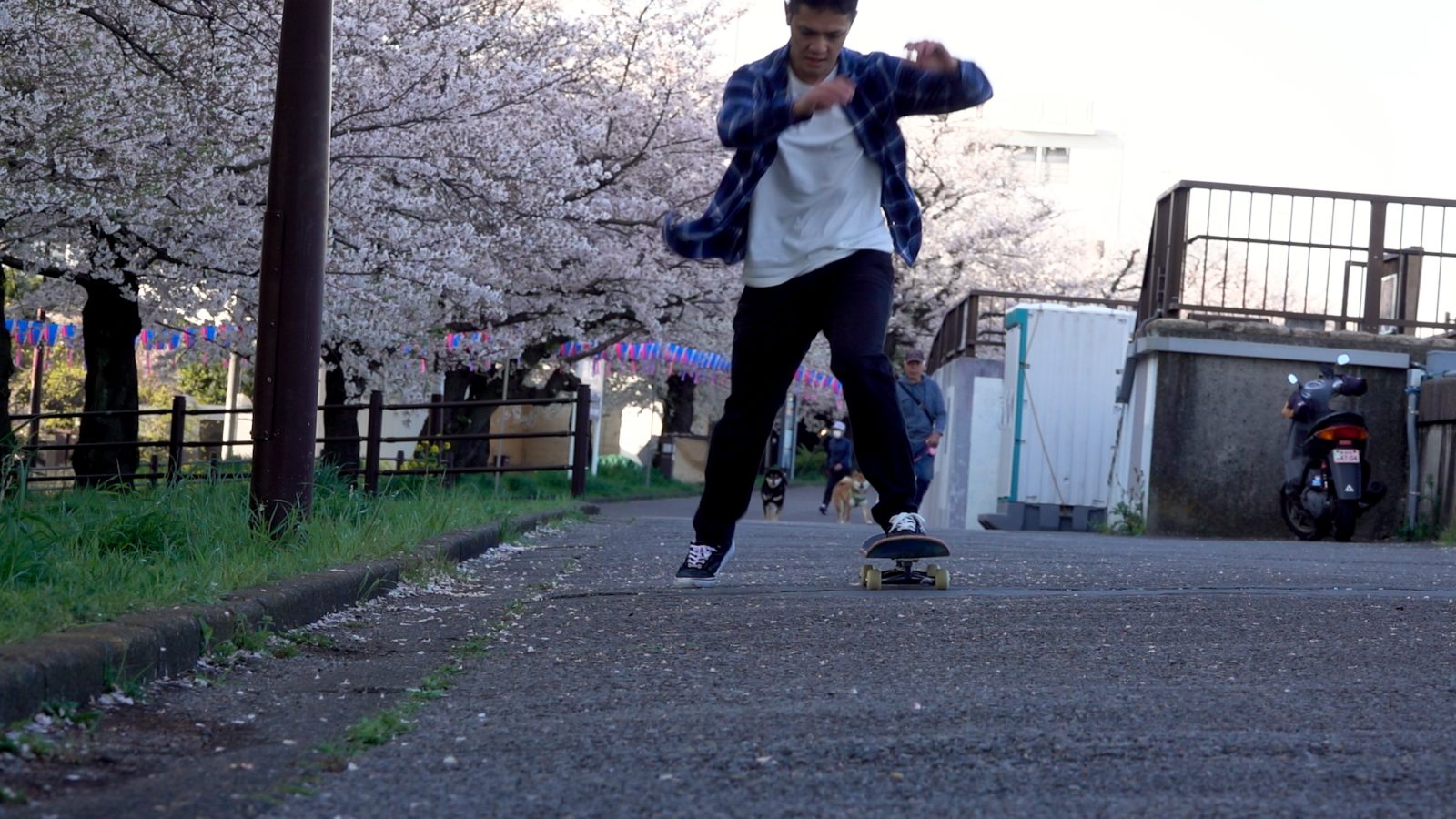
Placing the Back Foot
Once you're able to fully commit your weight to the front foot, you'll be able to place your back foot on the board naturally.
Adjusting the Front Foot Position
After both feet are on the board, rotate your front foot so it faces sideways. Keep your toe on the board and pivot your front foot around it. You don't need to lift it.
How to Check Your Own Movement
To help you visualize your weight distribution, I've improved the system introduced earlier. With this update, the tool not only visualizes the center of mass and feet positions, but it also features a new "grid line" function. The grid lines can be customized to display cross, vertical, or horizontal lines, or they can be completely hidden.
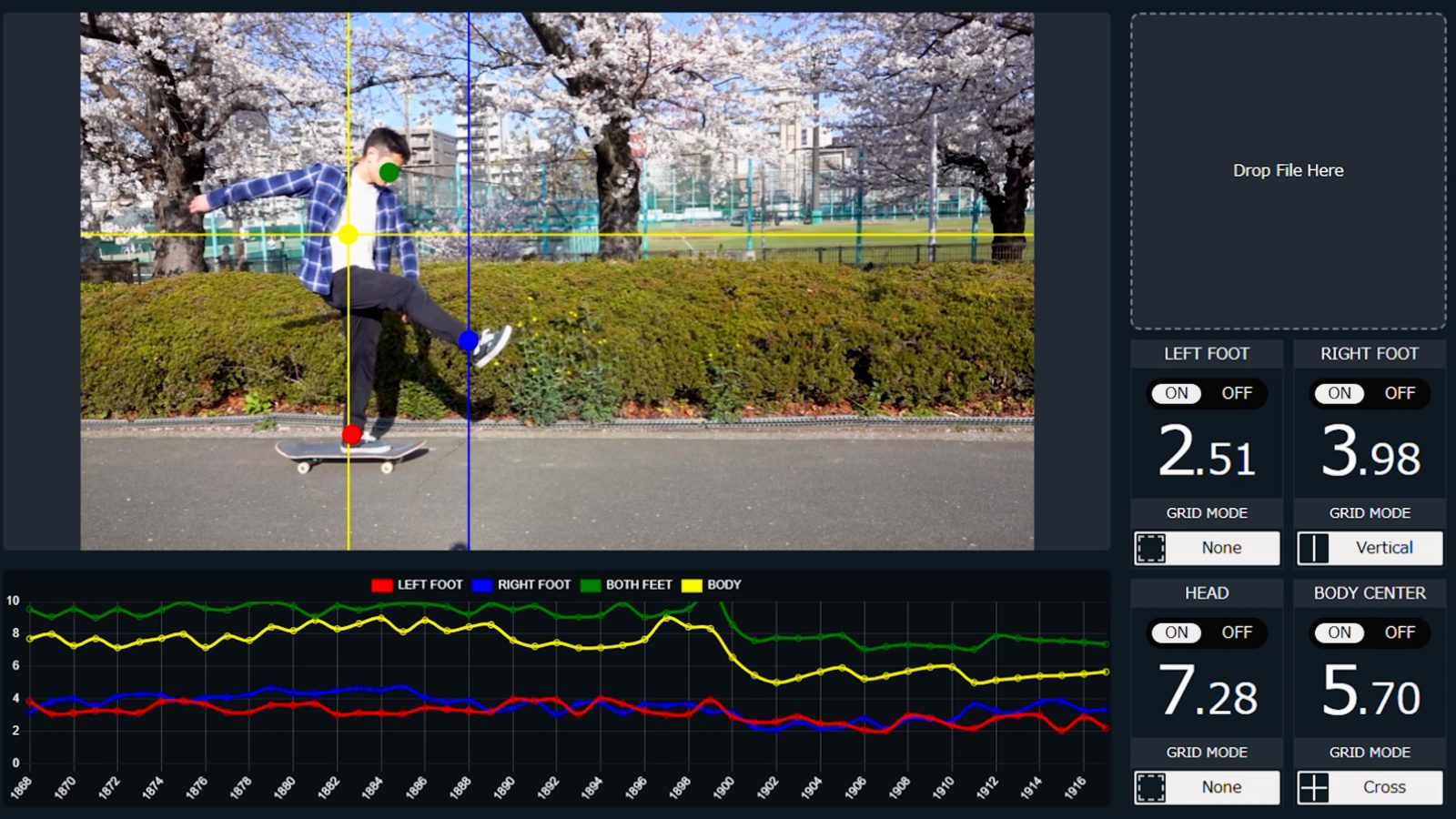
For example, if the yellow vertical line representing your center of gravity stays close to the skateboard, it means your weight distribution is well-maintained, and your push is likely solid. On the other hand, if you do it wrong, you can see how far the center of mass moves away from the board. Try using this tool to analyze and better understand your movement.
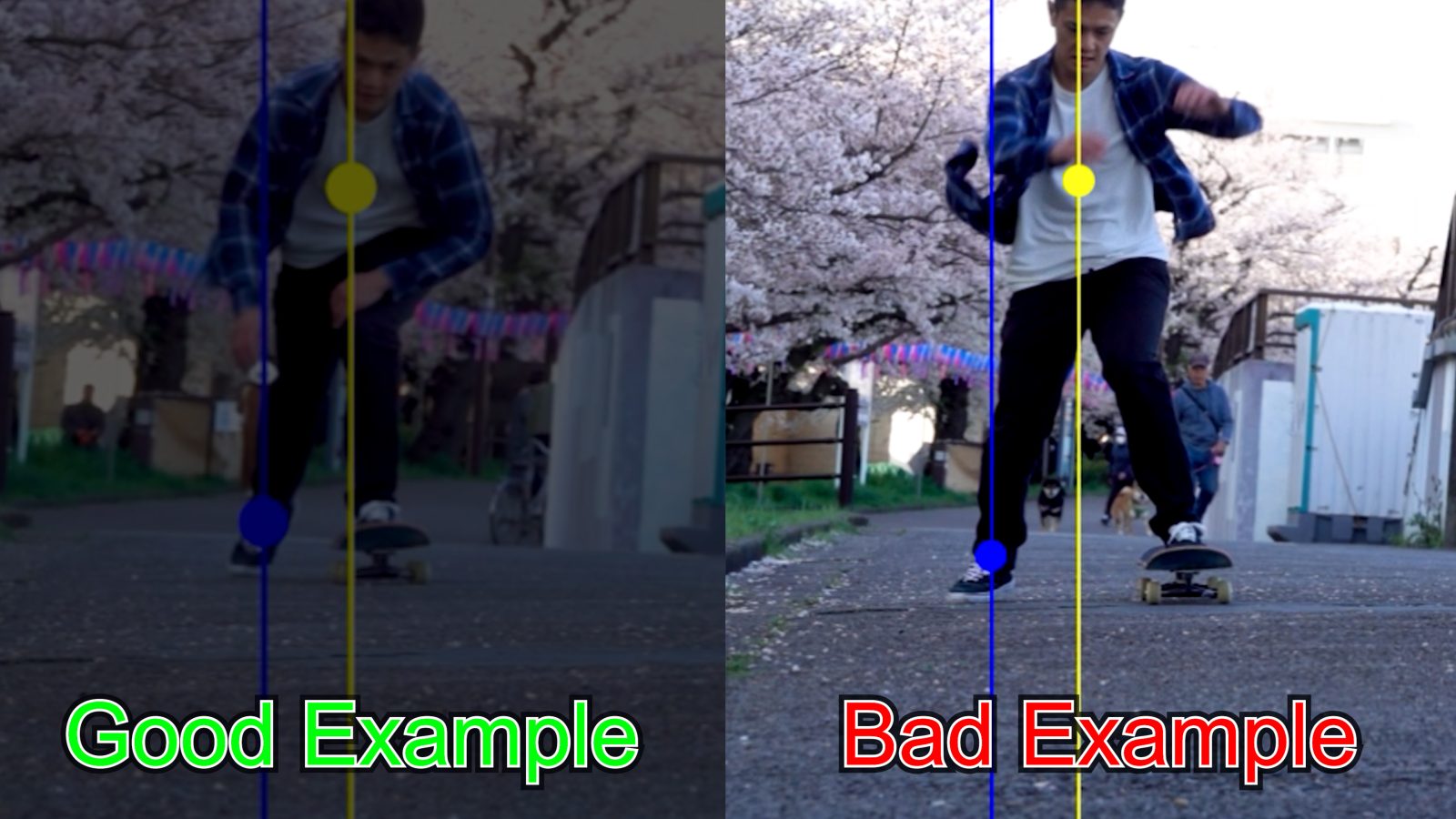
More Powerful Pushes
Once you're comfortable with the basic movements, try pushing harder. Keep your body axis vertical, and swing your back foot forward. Lower your body deeper and utilize the force of gravity to kick the ground strongly.
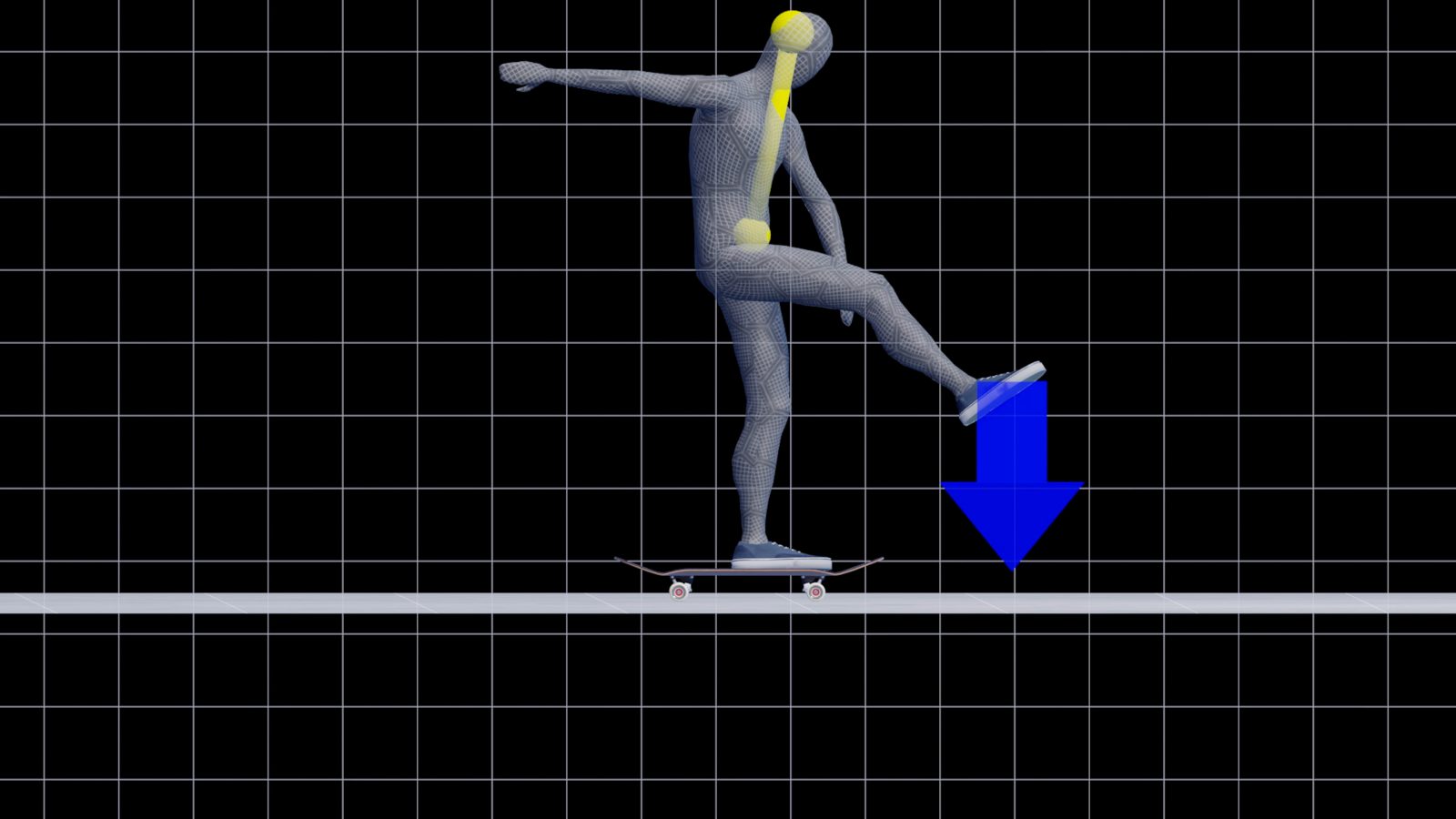
To maximize the power of the push, imagine not just using your leg but using the energy that your entire body generates when leaning forward. As your body leans forward, your front hand and knee naturally come close together, and you may put your hand on your knee. Practice steadily and find the style that suits you best.
Running Push
Once you're confident with regular pushing, try the running push. Hold the nose with your front hand and step forward, then release it mid-air and jump onto the board. At first, try to keep your body and board low. This will help reduce the risk of falling.


 Convert your video into 3D
Convert your video into 3D Facebook
Facebook Twitter
Twitter

